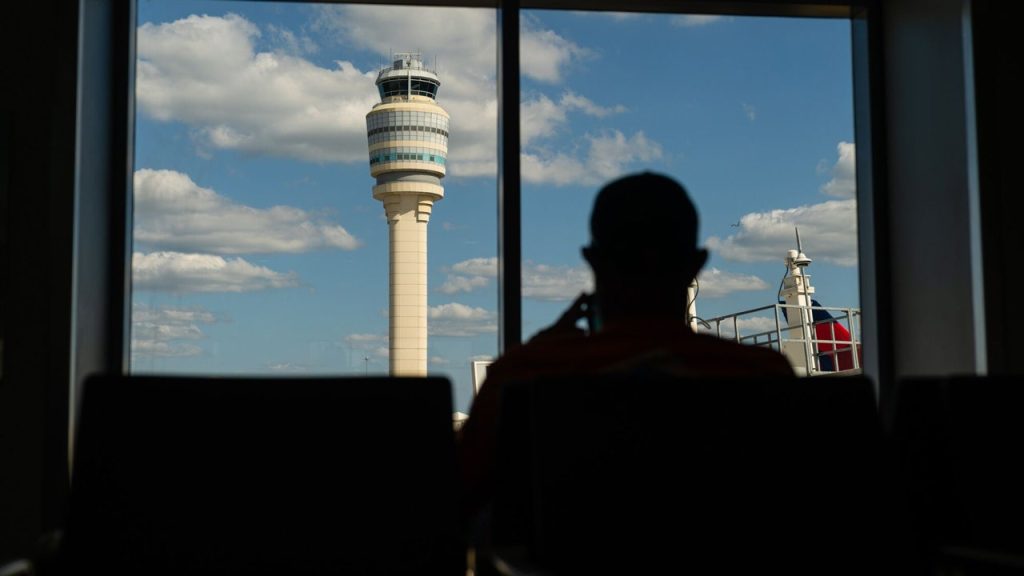Fire Alarm Incident Causes Major Disruption at Atlanta’s Busy International Airport
In a concerning development that added to an already challenging period for air travel in the United States, Hartsfield-Jackson Atlanta International Airport—one of the world’s busiest travel hubs—experienced a significant disruption on Friday afternoon when authorities issued a ground stop following reports of “strong gas fumes.” According to the Federal Aviation Administration (FAA), the incident began around 5 p.m. ET when an alarm was triggered by the concerning odor, prompting an immediate evacuation of the airport’s air traffic control tower. First responders quickly arrived at the scene to investigate the source of the potentially hazardous fumes, while airport officials worked to implement contingency plans to minimize the impact on thousands of travelers.
The FAA announced that a secondary air traffic control tower was being established to resume operations, with plans to lift the ground stop once this backup system was fully functional. However, the temporary closure created a ripple effect throughout the nation’s air travel network, with Flight Aware reporting nearly 300 delayed flights at the Atlanta airport alone. The incident highlighted the critical importance of air traffic control infrastructure and emergency response protocols at major transportation hubs, where even brief disruptions can cause widespread complications for travelers and airlines alike. The sudden evacuation of the primary control tower—a necessary safety precaution given the potential dangers associated with gas leaks—demonstrated how quickly airport authorities must act when facing possible threats.
This disruption at Atlanta’s international airport came at an especially challenging time for the U.S. aviation industry, which was already dealing with delays at airports across the country attributed to the ongoing government shutdown. The combination of these factors created a perfect storm of complications for travelers, many of whom found themselves stranded or facing extended waits as airlines scrambled to adjust their schedules and operations in response to the unexpected ground stop. For passengers already navigating the stress of modern air travel—with its security procedures, weather concerns, and scheduling pressures—the additional delay caused by the evacuation represented yet another hurdle in their journey.
The incident also underscores the complex nature of airport safety systems and the multiple layers of protection designed to detect potential hazards before they can escalate into more serious emergencies. The quick detection of gas fumes and the immediate response—while disruptive to operations—reflects the priority placed on passenger and staff safety at major transportation facilities. Airport authorities must constantly balance operational efficiency with stringent safety protocols, sometimes making difficult decisions that inconvenience thousands of travelers in the short term to prevent potentially catastrophic situations. In this case, the evacuation of the control tower was a precautionary measure that, while causing significant delays, represented the system working as designed to protect human life.
For the travelers affected by this incident, the ground stop meant missed connections, delayed vacations, postponed business meetings, and extended time in an already stressful environment. Each delayed flight represented hundreds of individual stories—families trying to reach loved ones, business professionals attempting to make important meetings, and individuals simply trying to return home after time away. The human impact of such disruptions extends far beyond the statistical count of affected flights, touching the lives of countless individuals who find themselves at the mercy of circumstances entirely beyond their control. Airlines, meanwhile, faced the logistical challenge of rerouting aircraft, accommodating stranded passengers, and minimizing the financial impact of the unexpected ground stop.
As this situation continued to develop, authorities worked diligently to resolve the issue and restore normal operations at the airport. The FAA’s decision to establish a secondary control tower demonstrated the importance of redundancy in critical infrastructure systems, allowing for continued—if reduced—operations even during emergency situations. While the specific cause of the gas fumes had not been fully determined at the time of reporting, the incident serves as a reminder of the vulnerabilities inherent in our transportation systems and the need for constant vigilance and preparation for unexpected emergencies. As travelers and airport staff alike waited for the situation to resolve, the incident added another chapter to the ongoing challenges facing the American aviation industry during an already difficult period marked by staffing shortages, governmental challenges, and increasing passenger demands.










